F.7(1) – Venturi Tube
A glass pipe has sections with different diameters and an U-shaped glass tube connecting both sections. One end of the pipe is connected by a rubber hose to a pressurized air supply and the other is open. The U-tube is half filled with colored water. As an air stream flows through the pipe, the different cross-sections will cause different velocities of air. This results in different pressures being exercised in each water column that is demonstrated by the different water levels.
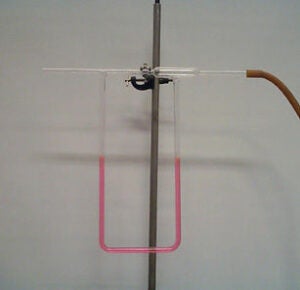
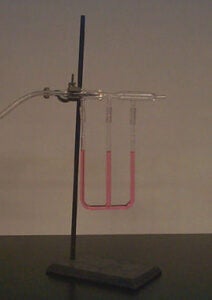
F.7(2) – Suspended Ping-Pong Ball
A vertical stand 15 cm high has an inner tube connected by a rubber hose to the pressurized air supply. Turn the air on and place a ping-pong ball in the vertical air stream. The ball will rise a few centimeters and remain there, spinning and bobbing, without falling. As the nozzle is moved slowly across the lecture table, the ball follows.
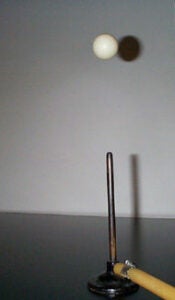
F.7(3) – Nozzle and Two Disks
Two disks (1 metal, 1 plastic) are tied at one side so that they are about 3 cm apart when facing each other. One of the disks has an outlet at the center fitting a rubber hose that is connected to the pressurized air supply. Place both disks on the table with the disk connected to the rubber hose on top. Hold the top disk 3 cm away from the bottom one and turn the air on. As a blast of air is blown between the two disks, instead of being blown apart, they come together. The one on the bottom clings to the top disk.
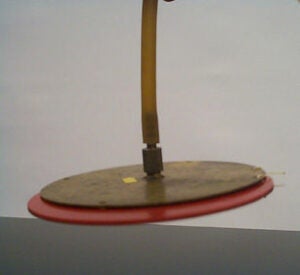
F.7(4) – Ball in a Funnel
A glass funnel has a rubber hose connecting it to the pressurized air supply. Invert the funnel over a small ball and turn the air on. The ball will push up the funnel opening and remain there while the air is blowing.
Click here to download the video clip of this demo
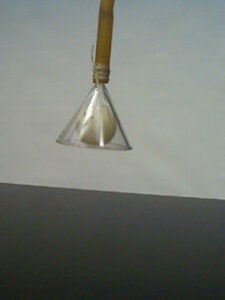
F.7(5) – Perfume Bottle
A spherical glass flask is connected by its neck to a valve system, opened at one side and connected to the air supply at the opposite end. The bottle is half-filled with colored water. As the air flows through the nozzle, the air pressure on the valve is reduced, causing the atmospheric pressure to push the water up until it is expelled through the opening.
